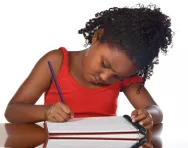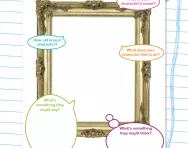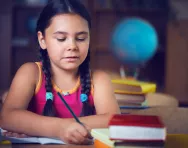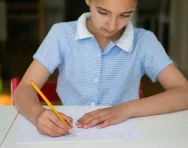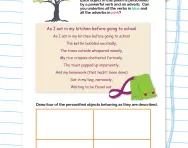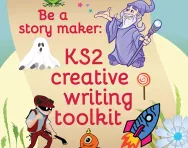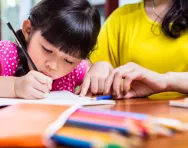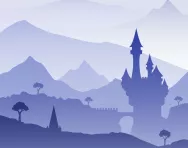6 ways to bring creative writing to life

Creative writing is an essential skill for every primary school child to master. Under the National Curriculum, all children in Key Stages 1 and 2 are expected to be able to articulate their ideas in an age-appropriate way and structure them properly in writing.
But creative writing doesn’t come naturally to all children. ‘It can be quite a dry subject if it’s taught in such a way that it doesn’t engage children, but if they’re enthused about the story they want to tell, it becomes exciting,’ says Ed Vere, bestselling author of Max the Brave and Max at Night (both £5.99, Puffin). So how can your child take that formulaic piece of writing and turn it into something that’s really worth reading?
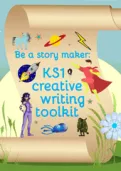
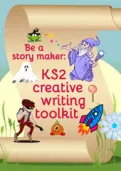
Download a FREE Creative Writing toolkit!
- KS1 & KS2 workbooks
- Bursting with fill-in prompt sheets and inspiring ideas
- Story structure tips, style guides and editing suggestions
1. Start with storytelling
Listen in on any primary school playground conversation, and you’ll soon realise that children are natural storytellers.
Whether they’re playing Mums and Dads or Dinosaurs versus Aliens, you can hear their imagination at work.
‘Children love to tell stories orally, and there shouldn’t be so much distinction between that and creative writing,’ says Ed. Encouraging your child to talk about the ideas in their head and develop them is a great way to light the spark that will set their creative writing on fire.
2. Come up with a character
Good stories often start with a strong character. ‘When a child creates a character that they know and understand, it comes to life in their head,’ Ed explains. ‘They want to tell its story, and the writing flows from there.’
One way to develop a character is to start by drawing it, and then writing descriptions all around the picture: what is his name? Where does he live? Who’s in his family? ‘It’s a great device to use when children are finding it difficult to start writing,’ adds Ed.
3. Use Wow words
Wow words – powerful words that bring life and colour to a piece of writing – are a familiar concept to every primary school child, but shoehorning them into a story can be difficult.
‘Often, when children are given a creative writing task, they are told to use Wow words, but struggle to fit them in,’ says Julia Skinner, founder of the 100 Word Challenge writing programme and The Head’s Office blog.
‘The result is that they sound contrived.’ A better way to approach it is to get your child to write an initial draft, then go back in and add adjectives, adverbs and other punchy vocabulary to make the writing flow better.
4. Write from experience
Wannabe authors are always being told to write what they know, and the same applies to children, despite their relative lack of life experience.
‘Even young children have had plenty of experience that can feed into their writing to make it sound convincing.’ Ed says. ‘Encourage them to observe life, look at the dynamics between people, and use their own experiences in their work – even the tantrum they had over their homework could be turned into an honest and emotional piece of work.’
5. Experiment with genre
From thrillers to adventures, real life stories to poetry, there’s a whole range of writing styles that your child can experiment with, and they’ll be actively encouraged to try out as many as possible at school.
‘Writing in different genres is a really good exercise as it takes children out of their comfort zone, and can help to make their writing even better,’ says Julia.
6. Consider your audience
Writing with your audience in mind is a sophisticated concept, but one that can really help inject life into your child’s work.
‘I often tell children to imagine who they’re telling their story to, and then rewrite it with that audience in mind,’ Ed explains. ‘This encourages them to think about what makes a story interesting to the reader.’ Just be prepared for some very different results depending on whether they’re aiming their story at their best friend or their headteacher!
Creative writing resources for children
Children's publisher Chicken House and authors Maz Evans, Holly Rivers, Emma Shevah and Christopher Edge inspire children to hatch their own stories with free creative writing planning resources and tips.

Give your child a headstart
- FREE articles & expert information
- FREE resources & activities
- FREE homework help
